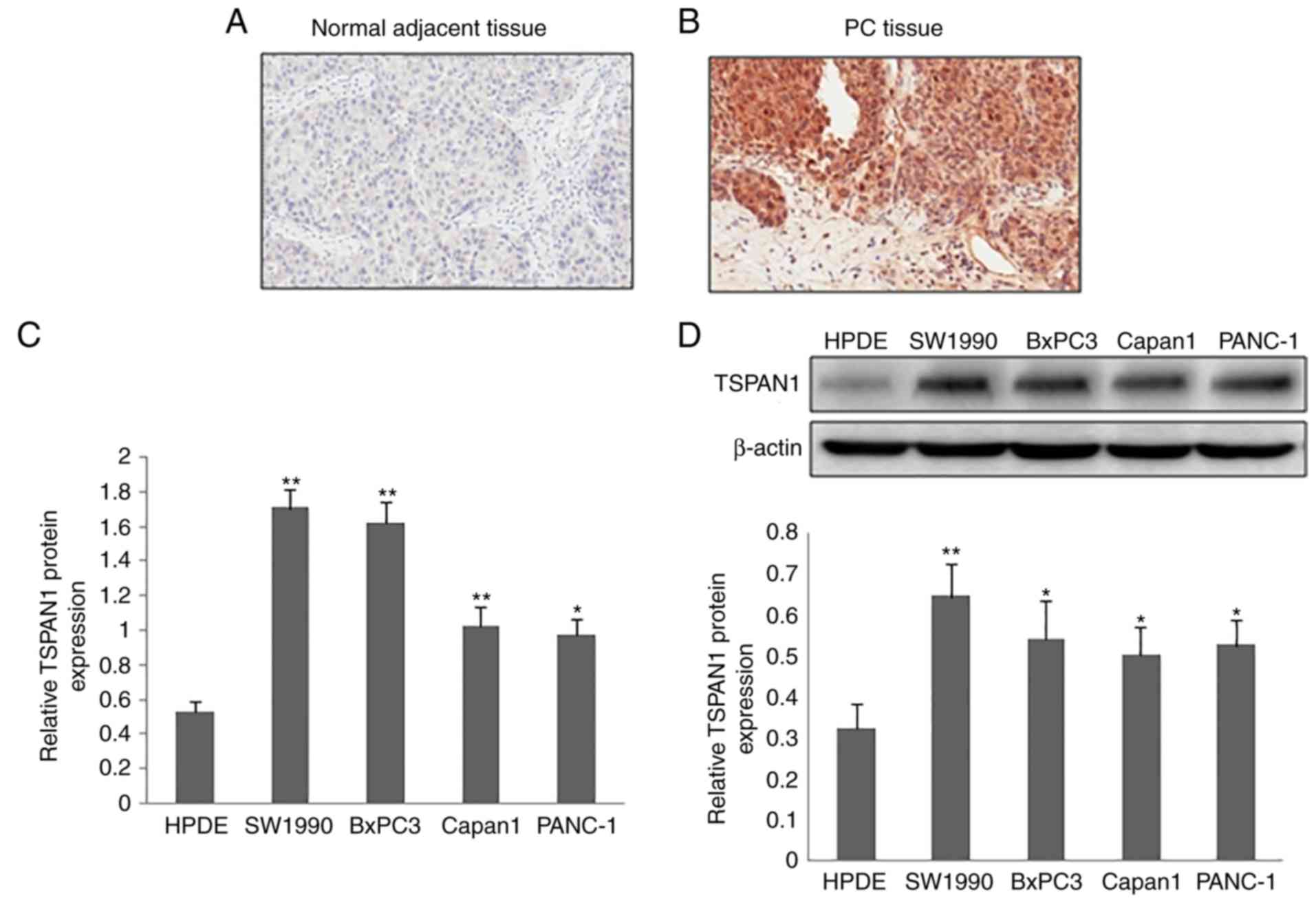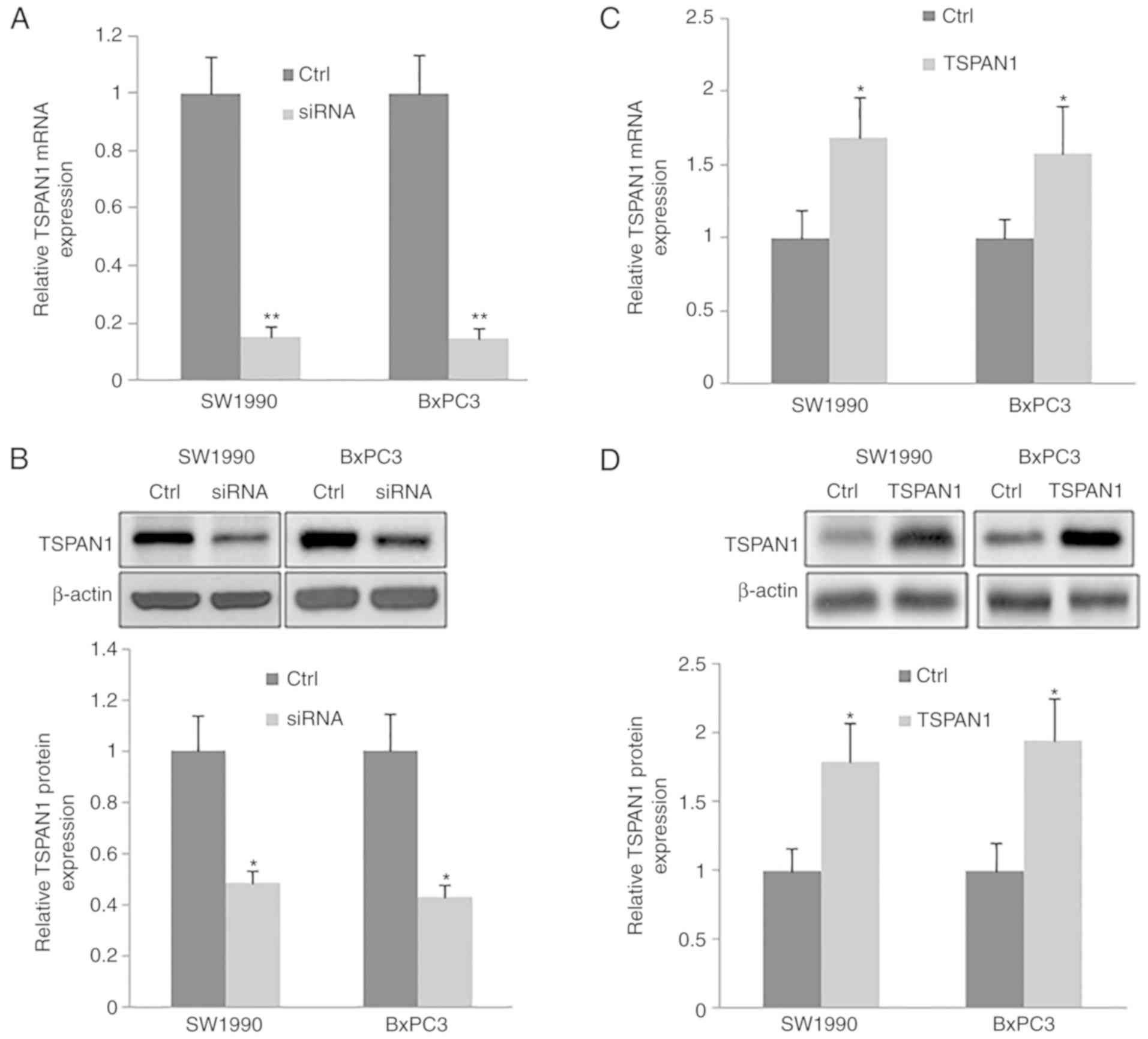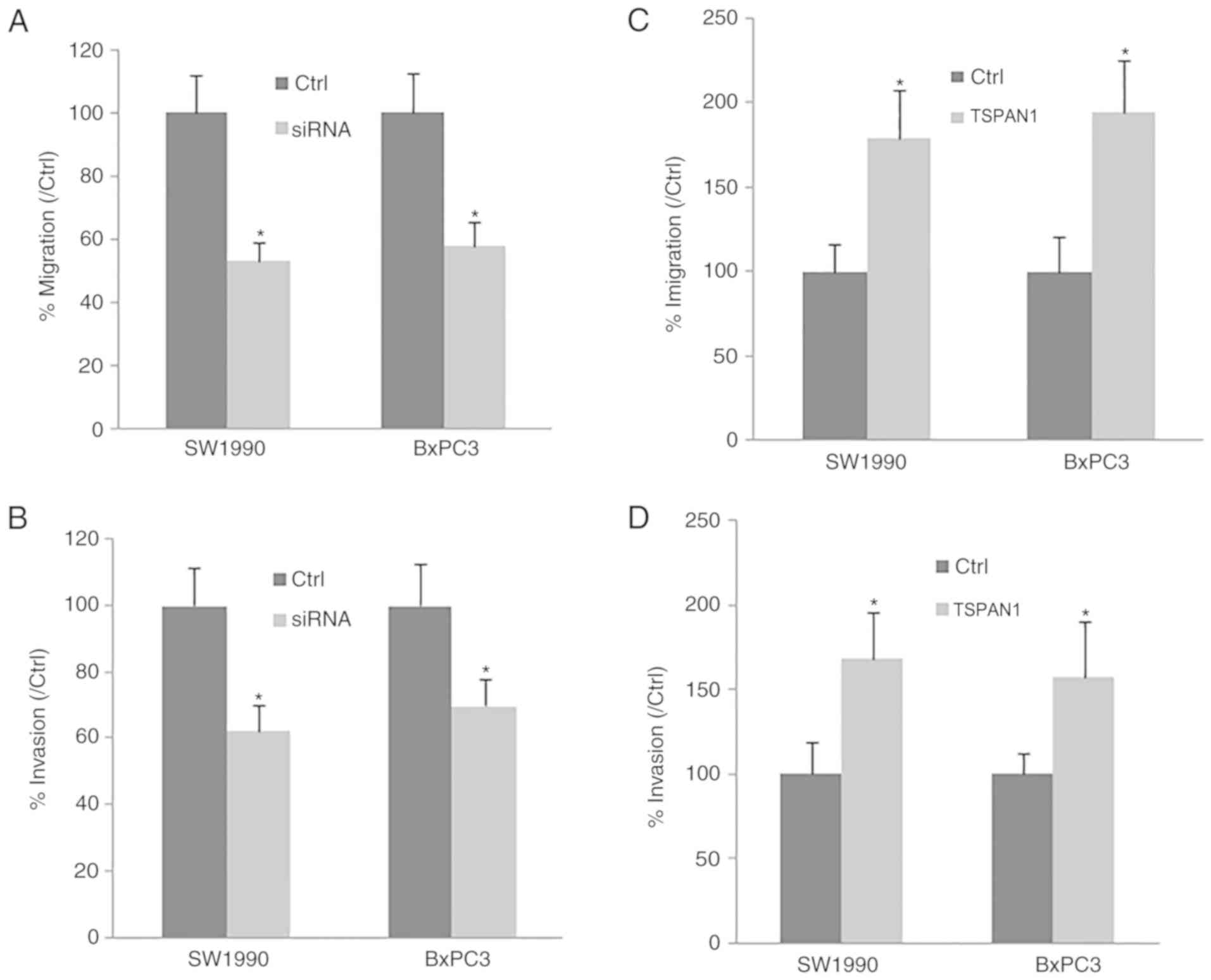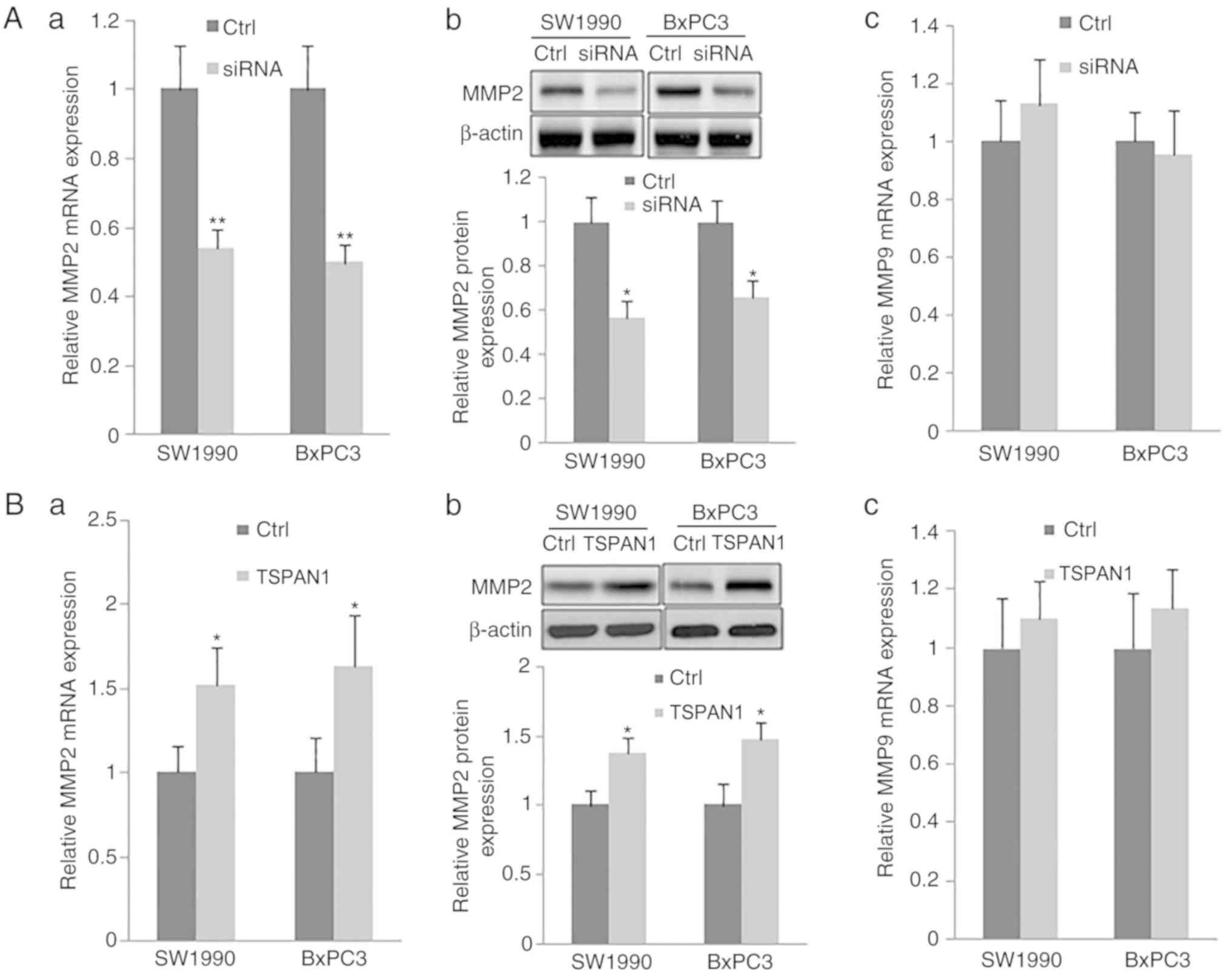|
1
|
Vincent A, Herman J, Schuick R, Hruban RH
and Goggins M: Pancreatic cancer. Lancet. 378:607–620. 2011.
View Article : Google Scholar : PubMed/NCBI
|
|
2
|
Siegel R, Ma J, Zou Z and Jemal A: Cancer
statistics, 2014. CA Cancer J Clin. 64:9–29. 2014. View Article : Google Scholar : PubMed/NCBI
|
|
3
|
Bosetti C, Bertuccio P, Negri E, La
Vecchia C, Zeegers MP and Boffetta P: Pancreatic cancer: Overview
of descriptive epidemiology. Mol Carcinog. 51:3–13. 2012.
View Article : Google Scholar : PubMed/NCBI
|
|
4
|
Loos M, Kleeff J, Friess H and Büchler MW:
Surgical treatment of pancreatic cancer. Ann N Y Acad Sci.
1138:169–180. 2008. View Article : Google Scholar : PubMed/NCBI
|
|
5
|
Mitchem JB, Hamilton N, Gao F, Hawkins WG,
Linehan DC and Strasberg SM: Long-term results of resection of
adenocarcinoma of the body and tail of the pancreas using radical
antegrade modular pancreatosplenectomy procedure. J Am Coll Surg.
214:46–52. 2012. View Article : Google Scholar : PubMed/NCBI
|
|
6
|
Nakai Y, Isayama H, Sasaki T, Sasahira N,
Tsujino T, Toda N, Kogure H, Matsubara S, Ito Y, Togawa O, et al: A
multicentre randomised phase II trial of gemcitabine alone vs
gemcitabine and S-1 combination therapy in advanced pancreatic
cancer: GEMSAP study. Br J Cancer. 106:1934–1939. 2012. View Article : Google Scholar : PubMed/NCBI
|
|
7
|
Long Y, Sun Q, Wu J, Wang Y and Jiao S:
Allogeneic cell-based immunotherapy combined with chemotherapy and
targeted therapy in advanced pancreatic cancer with metastases: A
case report. Oncol Lett. 7:1594–1598. 2014. View Article : Google Scholar : PubMed/NCBI
|
|
8
|
Hall WA, Colbert LE, Nickleach D,
Switchenko J, Liu Y, Gillespie T, Lipscomb J, Hardy C, Kooby DA,
Prabhu RS, et al: The influence of radiation therapy dose
escalation on overall survival in unresectable pancreatic
adenocarcinoma. J Gastrointest Oncol. 5:77–85. 2014.PubMed/NCBI
|
|
9
|
Hemler ME: Tetraspanin functions and
associated microdomains. Nat Rev Mol Cell Biol. 6:801–811. 2005.
View Article : Google Scholar : PubMed/NCBI
|
|
10
|
Yáñez-Mó M, Barreiro O, Gordon-Alonso M,
Sala-Valdés M and Sánchez-Madrid F: Tetraspanin-enriched
microdomains: A functional unit in cell plasma membranes. Trends
Cell Biol. 19:434–446. 2009. View Article : Google Scholar : PubMed/NCBI
|
|
11
|
Stipp CS, Kolesnikova TV and Hemler ME:
Functional domains in tetraspanins proteins. Trends Biochem Sci.
28:106–122. 2003. View Article : Google Scholar : PubMed/NCBI
|
|
12
|
Liu L, He B, Liu WM, Zhou D, Cox JV and
Zhang XA: Tetraspanin CD151 promotes cell migration by regulating
integrin trafficking. J Biol Chem. 282:31631–31642. 2007.
View Article : Google Scholar : PubMed/NCBI
|
|
13
|
Richardson MM, Jennings LK and Zhang XA:
Tetraspanins and tumor progression. Clin Exp Metastasis.
28:261–270. 2011. View Article : Google Scholar : PubMed/NCBI
|
|
14
|
Pedro AL: Functional implications of
tetraspanin proteins in cancer biology. Cancer Science.
98:1666–1677. 2007. View Article : Google Scholar : PubMed/NCBI
|
|
15
|
Garcia-España A, Chung PJ, Sarkar IN,
Stiner E, Sun TT and Desalle R: Appearance of new tetraspanin genes
during vertebrate evolution. Genomics. 91:326–334. 2008. View Article : Google Scholar : PubMed/NCBI
|
|
16
|
Guo Q, Xia B, Zhang F, Richardson MM, Li
M, Zhang JS, Chen F and Zhang XA: Tetraspanin CO-029 inhibits
colorectal cancer cell movement by deregulating cell-matrix and
cell-cell adhesions. PLoS One. 7:e384642012. View Article : Google Scholar : PubMed/NCBI
|
|
17
|
Ke AW, Shi GM, Zhou J, Wu FZ, Ding ZB, Hu
MY, Xu Y, Song ZJ, Wang ZJ, Wu JC, et al: Role of overexpression of
CD151 and/or c-Met in predicting prognosis of hepatocellular
carcinoma. Hepatology. 49:491–503. 2009. View Article : Google Scholar : PubMed/NCBI
|
|
18
|
Duan H, Qu L and Shou C: Activation of
EGFR-PI3K-AKT signaling is required for Mycoplasma
hyorhinis-promoted gastric cancer cell migration. Cancer Cell Int.
14:1352014. View Article : Google Scholar : PubMed/NCBI
|
|
19
|
Chen L, Yuan D, Zhao R, Li H and Zhu J:
Suppression of TSPAN1 by RNA interference inhibits proliferation
and invasion of colon cancer cells in vitro. Tumori. 96:744–750.
2010. View Article : Google Scholar : PubMed/NCBI
|
|
20
|
Livak KJ and Schmittgen TD: Analysis of
relative gene expression data using real-time quantitative PCR and
the 2−ΔΔCT method. Methods. 25:402–408. 2001. View Article : Google Scholar : PubMed/NCBI
|
|
21
|
Albrethsen J, Bøgebo R, Gammeltoft S,
Olsen J, Winther B and Raskov H: Upregulated expression of human
neutrophil peptides 1, 2 and 3 (HNP 1–3) in colon cancer serum and
tumours: A biomarker study. BMC Cancer. 5:82005. View Article : Google Scholar : PubMed/NCBI
|
|
22
|
Cordeiro C and Freire AP: Digitonin
permeabilization of Saccharomyces cerevisiae cells for in
situ enzyme assay. Anal Biochem. 229:145–148. 1995. View Article : Google Scholar : PubMed/NCBI
|
|
23
|
Chen CA and Okayama H: Calcium
phosphate-mediated gene transfer: A highly efficient transfection
system for stably transforming cells with plasmid DNA.
Biotechniques. 6:632–638. 1988.PubMed/NCBI
|
|
24
|
Takahashi M, Sugiura T, Abe M, Ishii K and
Shirasuna K: Regulation of c-Met signaling by the tetraspanin
KAI-1/CD82 affects cancer cell migration. Int J Cancer.
121:1919–1929. 2007. View Article : Google Scholar : PubMed/NCBI
|
|
25
|
Fei Y, Wang J, Liu W, Zuo H, Qin J, Wang
D, Zeng H and Liu Z: CD151 promotes cancer cell metastasis via
integrins α3β1 and α6β1 in vitro. Mol Med Rep. 6:1226–1230.
2012. View Article : Google Scholar : PubMed/NCBI
|
|
26
|
Haeuw JF, Goetsch L, Bailly C and Corvaia
N: Tetraspanin CD151 as a target for antibody-based cancer
immunotherapy. Biochem Soc Trans. 39:553–558. 2011. View Article : Google Scholar : PubMed/NCBI
|
|
27
|
Chen L, Zhu Y, Li H, Wang GL, Wu YY, Lu
YX, Qin J, Tuo J, Wang JL and Zhu J: Knockdown of TSPAN1 by RNA
silencing and antisense technique inhibits proliferation and
infiltration of human skin squamous carcinoma cells. Tumori.
96:289–295. 2010. View Article : Google Scholar : PubMed/NCBI
|
|
28
|
Hölters S, Anacker J, Jansen L,
Beer-Grondke K, Dürst M and Rubio I: Tetraspanin 1 promotes
invasiveness of cervical cancer cells. Int J Oncol. 43:503–512.
2013. View Article : Google Scholar : PubMed/NCBI
|
|
29
|
Lu Z, Luo T, Nie M, Pang T, Zhang X, Shen
X, Ma L, Bi J, Wei G, Fang G and Xue X: TSPAN1 functions as an
oncogene in gastric cancer and is downregulated by miR-573. FEBS
Lett. 589:1988–1994. 2015. View Article : Google Scholar : PubMed/NCBI
|
|
30
|
Ellenrieder V, Adler G and Gress TM:
Invasion and metastasis in pancreatic cancer. Ann Oncol. 10 (Suppl
4):S46–S50. 1999. View Article : Google Scholar
|
|
31
|
Nagase H and Woessner JF Jr: Matrix
metalloproteinases. J Biol Chem. 274:21491–21494. 1999. View Article : Google Scholar : PubMed/NCBI
|
|
32
|
Curran S and Murray GI: Matrix
metalloproteinases in tumour invasion and metastasis. J Pathol.
189:300–308. 1999. View Article : Google Scholar : PubMed/NCBI
|
|
33
|
Bramhall SR, Neoptolemos JP, Stamp GW and
Lemoine NR: Imbalance of expression of matrix metalloproteinases
(MMPs) and tissue inhibitors of the matrix metalloproteinases
(TIMPs) in human pancreatic carcinoma. J Pathol. 182:347–355. 1997.
View Article : Google Scholar : PubMed/NCBI
|
|
34
|
Khokha R and Denhardt DT: Matrix
metalloproteinases and tissue inhibitor of metalloproteinases: A
review of their role in tumorigenesis and tissue invasion. Invasion
Metastasis. 9:391–405. 1989.PubMed/NCBI
|
|
35
|
Koshiba T, Hosotani R, Wada M, Fujimoto K,
Lee JU, Doi R, Arii S and Imamura M: Detection of matrix
metalloproteinase activity in human pancreatic cancer. Surg Today.
27:302–304. 1997. View Article : Google Scholar : PubMed/NCBI
|
|
36
|
Nagakawa Y, Aoki T, Kasuya K, Tsuchida A
and Koyanagi Y: Histologic features of venous invasion, expression
of vascular endothelial growth factor and matrix
metalloproteinase-2 and matrix metalloproteinase-9, and the
relation with liver metastasis in pancreatic cancer. Pancreas.
24:169–178. 2002. View Article : Google Scholar : PubMed/NCBI
|



















